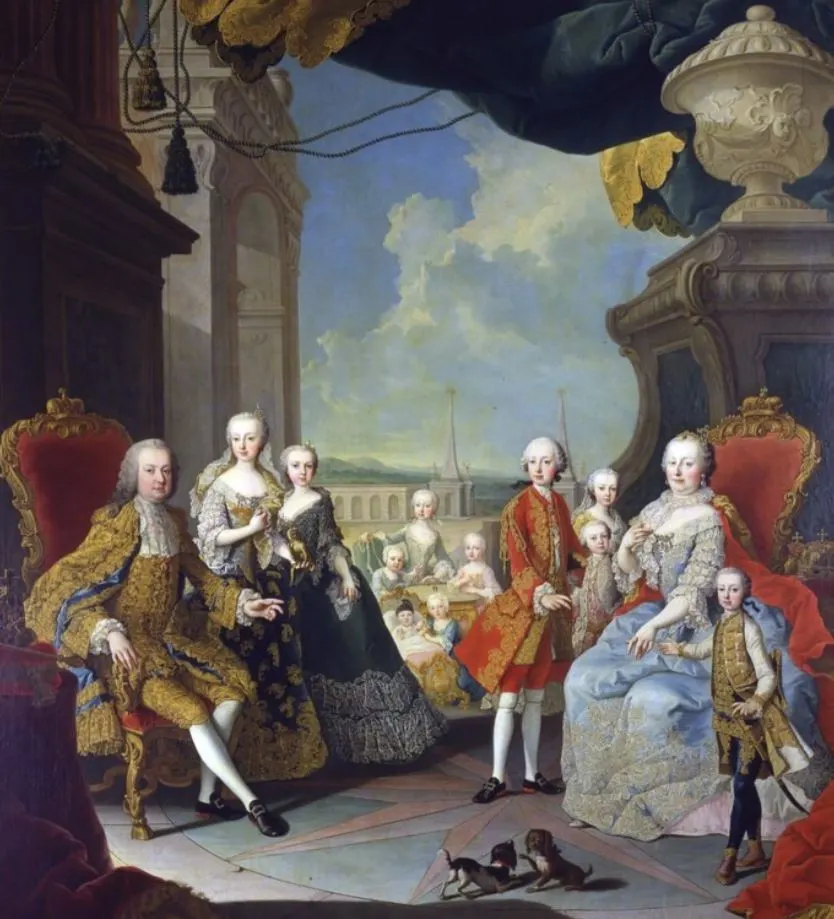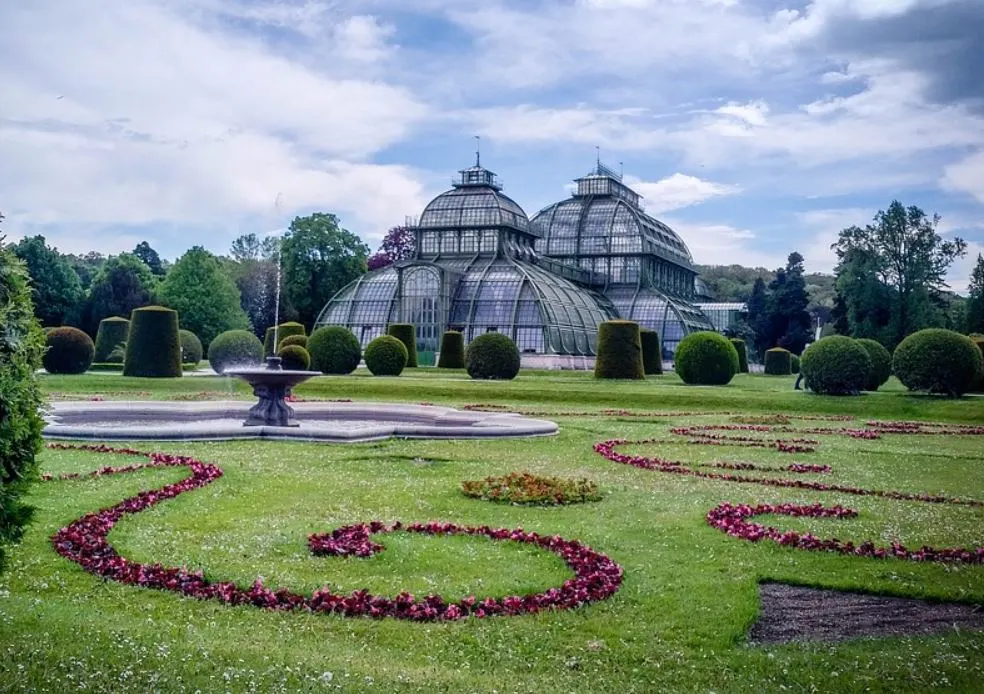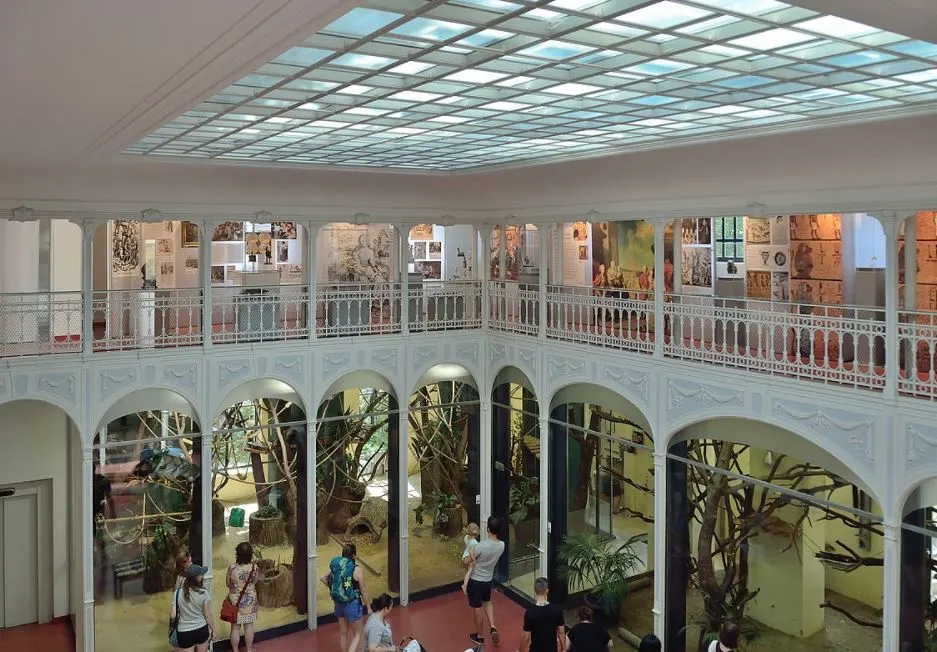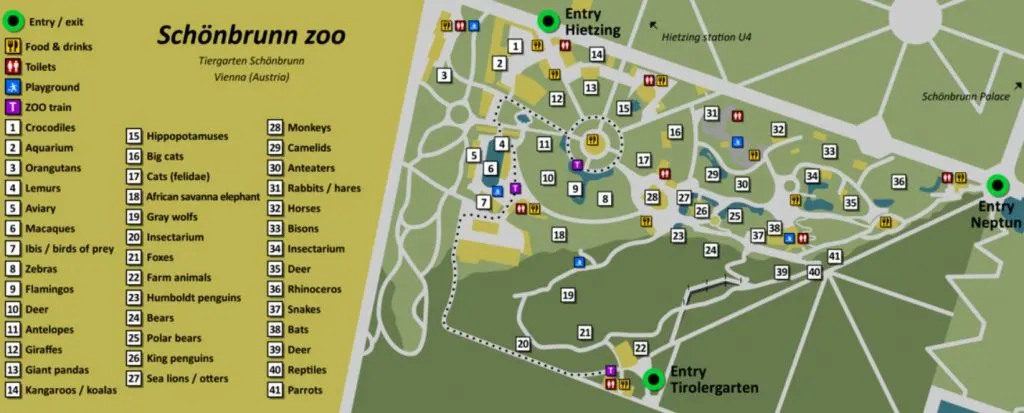Did you know that the oldest operational zoo is located near a fabulous palace in the capital of Austria?
In this article, you’ll discover the ultimate list of interesting facts about the Vienna Zoo (or “Tiergarten Schönbrunn”), One of the must-visit tourist attractions in Vienna for multiple reasons.
1. It’s located within the grounds of a famous palace in Vienna
The Vienna Zoo, locally known as “Tiergarten Schönbrunn” (which translates to “Schönbrunn Animal Garden”), is a famous zoo located within the grounds of one of the most amazing palaces in the world, Schönbrunn Palace.
This enormous palace features an astounding 1,441 rooms and has a history of over 3 centuries. The zoo is an integral part of the adjoining gardens and can be found just southwest of the palace complex.
The entire complex is located just to the southwest of the historical center of Vienna and is one of the city’s most popular tourist attractions.

2. It was originally founded as a menagerie in the 18th century
The origins of the zoo go back all the way to the year 1540 when a small zoo was founded in this location featuring what were then considered to be exotic birds such as Peafowl and Turkeys.
The Vienna Zoo wasn’t constructed as it appears today until the year 1752 on the orders of the Holy Roman Emperor, Francis I, who was the husband of Maria Theresia, the only female Habsburg ruler in history.
The zoo wasn’t anything back then what it is today, though, and was basically a small menagerie to keep the personal collection of animals of the Emperor.
Because the zoo was officially founded back then it means that it’s the oldest continuously operating zoo in the world!

3. The center of the zoo features an iconic structure
The original menagerie was much smaller than the relatively large zoo inside the palace gardens today. The area was centered around a remarkable Baroque structure that dates back to the 18th century and which had a remarkable purpose.
This central pavilion was built especially to serve imperial breakfasts. This way, the Emperor and his entire family could enjoy breakfast while admiring their growing collection of wild animals.
The design of the entire zoo was centered around this structure as a total of 13 animal compounds were established around this building in the form of cut cake pieces.
They surely thought about everything, and while the Emperors were enjoying their cake here a couple of centuries ago, you can now do exactly that in the same building as well, quite amazing!

4. It was home to over 700 animal species in the early 20th century
The zoo really became popular in the early 19th century, and that had everything to do with the arrival of real exotic wild animals such as giraffes and big cats. These were brought here following specific expeditions in Africa and the Americas on the orders of Holy Roman Emperor Joseph II.
The arrival of the first giraffe in 1828 can be considered a turning point in not only the zoo’s history but also in Vienna as well. Fashion and other items were influenced by these wild creatures. This pretty much means that the zoo defined culture in Vienna during this period.
By the early 20th century, the zoo was home to 712 animal species and a total of 3,500 individual animals lived here.

5. The zoo became a very popular attraction in the 1990s and 2000s
The zoo nearly had to shut its doors because of a financial crisis in the 1980s. After all, running a zoo is quite expensive as there are many mouths to feed!
The only solution was to privatize the zoo, something that happened in the early 1990s. Because of the new manager named Dr. Helmut Pechlaner, the zoo was not only able to survive, but also expand!
During this period in the 1990s and early 2000s, several attractions were added to the zoo, including the rainforest house, the desert house, both structures which joined the late 19th-century palm house.
These additions have turned the zoo into one of the most popular tourist attractions in Vienna today!

More interesting facts about the Vienna Zoo
6. The zoo suffered a lot of damage during World War I as it wasn’t possible to maintain many of the animals during this horrible period in human history. The once 3,500 animals that lived here in the early 20th century shrunk to just 900 after the war.
7. World War II was even worse because the zoo actually got bombed in February of the year 1945. This not only destroyed multiple historic buildings but also killed a lot of animals. Only 400 animals were still alive at the end of World War II.
8. The zoo’s popularity exploded in the 2000s because of a popular new resident. The Vienna Zoo is one of the few zoos in the world that houses giant pandas, arguably one of the most fascinating types of bears in the world. Multiple baby pandas have been born naturally in the zoo ever since.

9. Some of the most popular attractions in the Vienna Zoo are the rainforest house, which simulates the conditions of the Amazon Rainforest, and the aquarium, which allows visitors to experience a simulation of a flooded Amazon River. There’s also a polarium that simulates conditions in the Arctic region.
10. The 250th anniversary of the zoo happened in 2002 and was celebrated with the creation of a special commemorative silver collector’s coin.
As one might expect, the main feature on this coin is the Emperor’s Pavilion, the central building of the original zoo layout, and multiple animals surrounding it.

